Three Infill Projects Accomodate Pedestrians and Motorists
I’m a huge fan of Retrofitting Suburbia, the redevelopment of formerly auto-centric suburban retail sites. In late September, while on my honeymoon, I got to see three different examples in the Denver area. Two site once had traditional enclosed malls, the third was previously an airport. We started with the oldest and finished with the newest.
Englewood, CO
In June 2000 the CityCenter Englewood project opened, replacing Cinderella City mall that had opened just 32 years earlier:
The mall was completed and officially opened for business on 7 March 1968 and once held the distinction of being the largest covered shopping center west of the Mississippi River. It featured four sections: Rose Mall, Gold Mall, Shamrock Mall and Cinder Alley. In addition, the Center Court area was known as the Blue Mall. It was demolished in 1999. (Wikipedia)
Englewood was founded in the 19th Century but largely developed in the Post-WWII era. Like many post-war suburbs, it lacked a downtown. By the 1980s newer malls had eclipsed Cinderella City. In the late 1990s they saw the replacement of the mall and the coming of light rail as an opportunity to build a downtown:
CityCenter Englewood replaced Cinderella City with a transit-oriented development (TOD). This TOD is a pedestrian-friendly, mixed-use concept that includes retail, entertainment, residential, office, civic and open space elements with a transit focal point. The former Foley’s building was renovated into the new Englewood Civic Center, which houses the City Hall offices, the Library, Municipal Court, and the Museum of Outdoor Arts. The Civic Center was the first feature of CityCenter Englewood to open when it made its debut in June 2000.
The Civic Center creates the cornerstone of the redevelopment of Cinderella City that includes Wal-Mart, Trammell Crow apartments with first floor retail, Office Depot, the Sports Authority, IHOP, Qdoba, and other retail and commercial businesses, second floor office with first floor retail, an RTD light rail station, and a Bally’s Fitness Center. (City of Englewood)
You can see a current aerial here, and a 1991 aerial here. In the Southwest corner of the site an anchor store building was retained, as was part of the structured parking. The adjacent street grid was brought through the site. Apartments were added nearest the new light rail station, big box stores added to the east end of the site. All connected by a grid of streets and sidewalks.
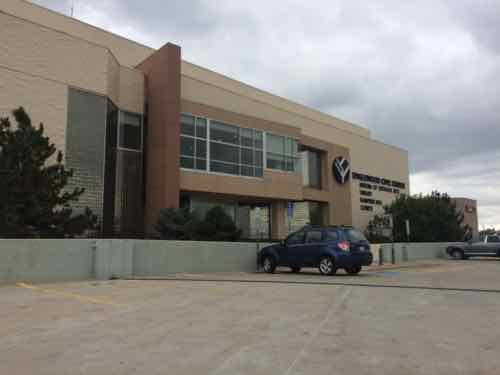
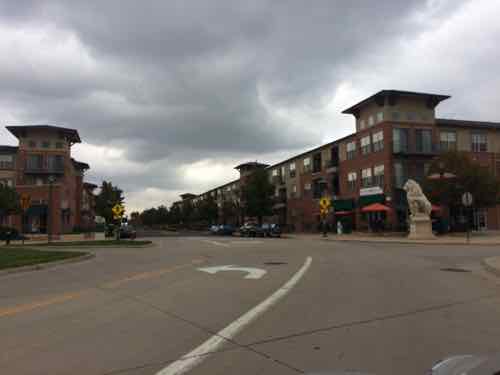
Not bad for an early example of such a project. We saw people walking as we drove through, others can be seen in Google Street View.
Lakewood, CO
The Villa Italia mall opened two years before Cinderella City, in 1966. By the 1990s Lakewood officials saw both malls dying off, they didn’t want a vacant mall in their city.
A referendum was held in 1997, which authorized “urban renewal” to redevelop Villa Italia into a more conventional downtown district, something that the post-war suburb had never had.
In 1998, Lakewood entered into a joint venture with Denver-based Continuum Development. Continuum purchased the land beneath the mall from the Bonfils-Stanton Foundation in September 1999 and acquired the buildings and ground leases from Equitable in early 2001. The site was rezoned (from that of an enclosed shopping center to a mixed-use development) and the redevelopment plan put in motion.
Villa Italia closed in July 2001, demolition began the following January. Belmar opened in 2004. Like CityCenter Englewood, streets were cut through the site. Not private driveways, public streets with public sidewalks. The pedestrian grid was as equally important as the vehicular grid, not an afterthought.
You can view an old aerial here and a current one here.
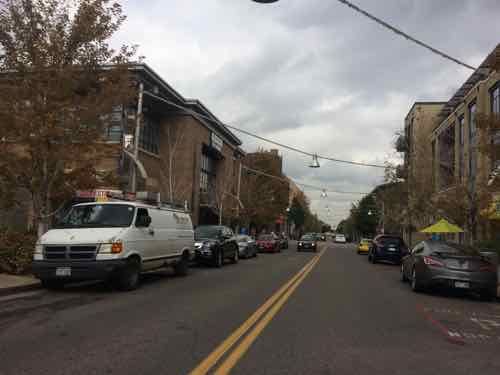
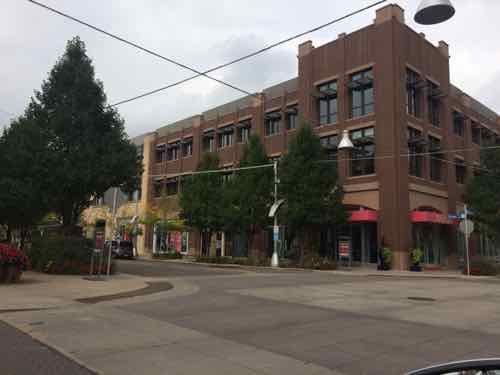
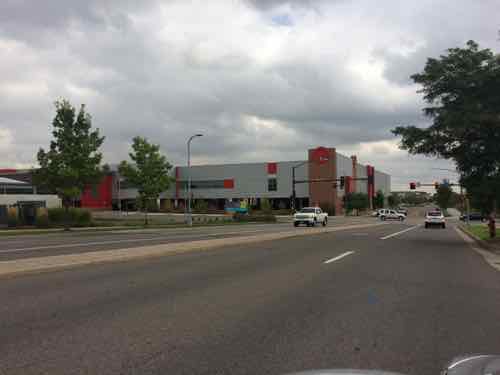
A former anchor department store building was kept, it’s now a Dick’s Sporting Goods store. New housing is on the perimeter of the site, surrounding the retail core.
Stapleton
When Denver decided to build a new airport east of the developed region the question became what to do with the old airport.
b
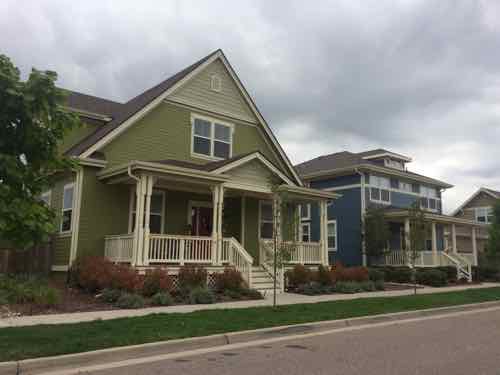
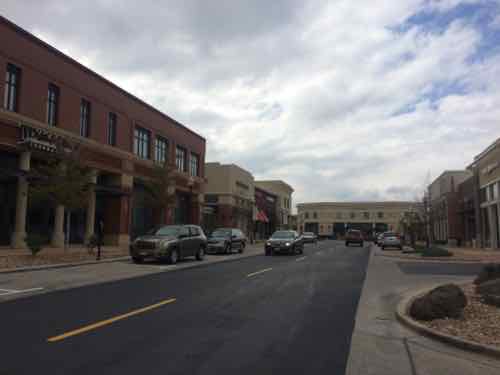
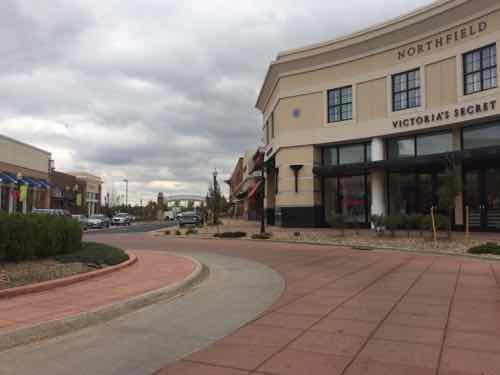
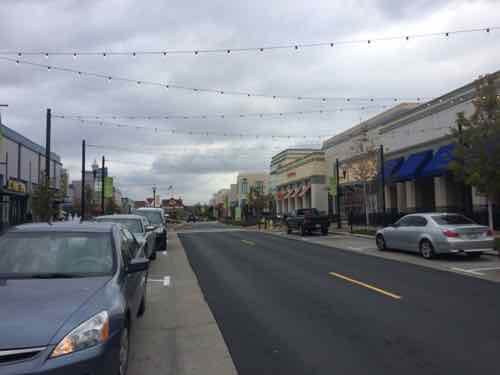
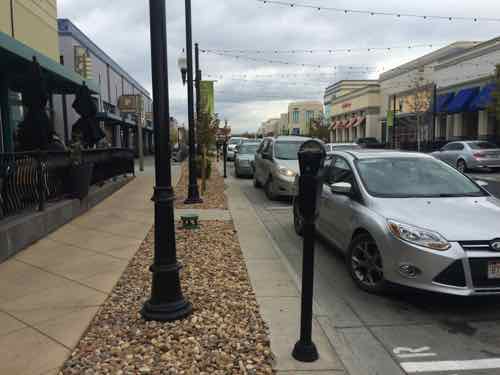
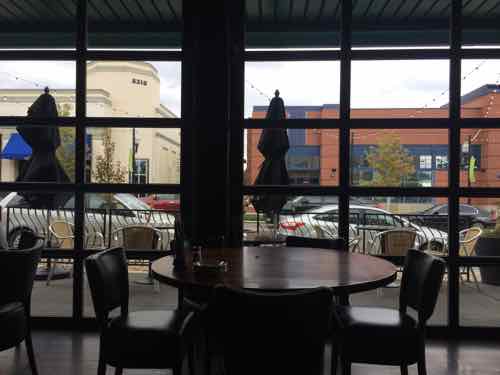
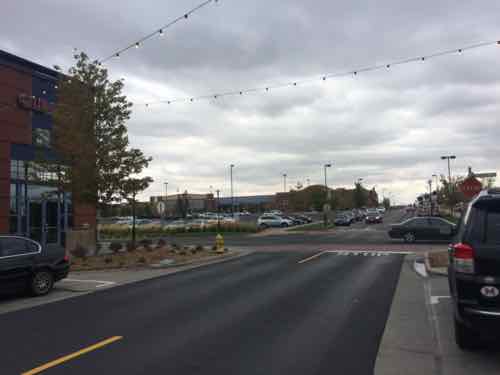
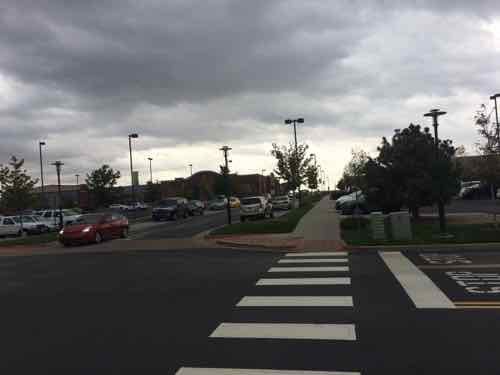
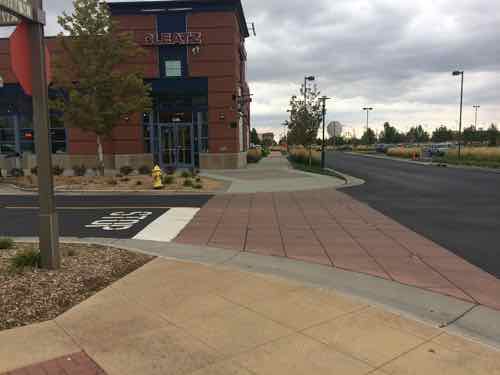
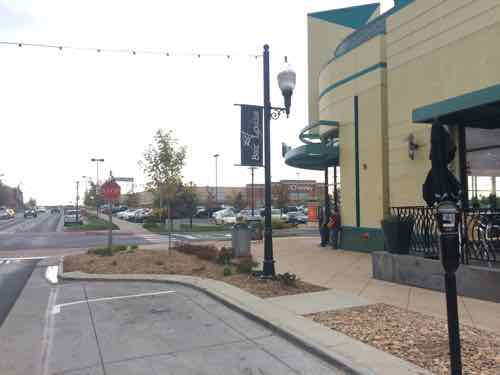
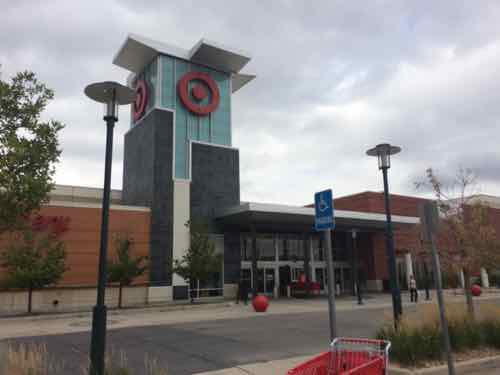
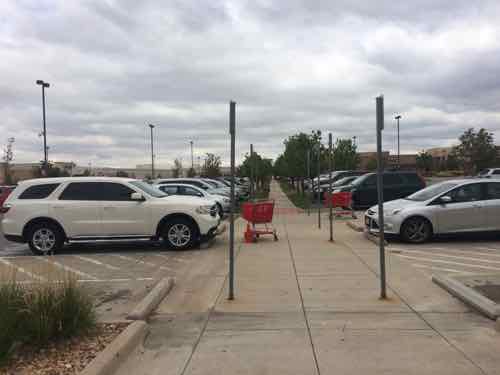
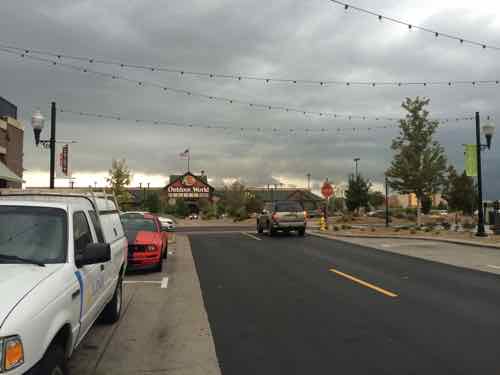
The overall site is massive, as you might expect from a former airport. It has many residential neighborhoods, distinct retail areas, and a business park.
Final thoughts
All three are variations on the New Urbanist/Retrofitting Suburbia theme. While I wouldn’t want to live at any of the three I know someone like me, who uses a wheelchair often, can get to businesses at each development on a sidewalk network. All three remain very car friendly, I drove to all three. Providing the option to walk doesn’t make them less appealing to motorists. Some pedestrians probably arrived by car but decide to explore on foot rather than drive from store to store.
— Steve Patterson
These (and a fourth – Lowry) all happened through a combination of strong local leadership, empowered citizen activists and a strong real estate market. Citizens made their desires known, city staff listened, local leaders enacted staff recommendations AND developers saw that there was money to be made by doing things this way. It took more than blogging and bitching, it took building alliances, it took electing politicians who “got it” (at least to some degree), and it took a strong real estate market. Check out the Stapleton website – http://www.stapletondenver.com/find-your-home?type=All . . comparable housing prices, there, are at least $100,000 more than they are here.
As for the good accessibility, that boils down to a combination of a vocal, aggressive disability community – http://ccdconline.org/ – and consistent enforcement of ADA standards, on both public and private projects. As you’ve noted, many times, it costs little or nothing to do things right the first time, and it costs a lot more to go in and fix it later. It also takes buy in by local leadership, especially when it comes to both improving accessibility (with things like curb ramps in established neighborhoods) and working toward closing missing links in the pedestrian grid: https://www.denvergov.org/infrastructure/DenverPublicWorksPolicyandPlanning/CompletedProjects/PedestrianMasterPlan/tabid/442851/Default.aspx